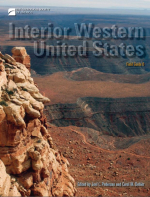Добрый день, Коллеги. Важное сообщение, просьба принять участие. Музей Ферсмана ищет помощь для реставрационных работ в помещении. Подробности по ссылке
Interior western United States. Field Guide 6 / Строение западной части США. Полевой путеводитель 6
The Neoproterozoic Uinta Mountain Group is undergoing a new phase of stratigraphic and paleontologic research toward understanding the paleoenvironments, paleoecology, correlation across the range and the region, paleogeography, basin type, and tectonic setting. Mapping, measured sections, sedimentology, paleontology, U-Pb geochronology, and C-isotope geochemistry have resulted in the further characterization and genetic understanding of the western and eastern Uinta Mountain Group.The Red Pine Shale in the western Uinta Mountain Group and the undivided clastic strata in the eastern Uinta Mountain Group have been a focus of this research, as they are relatively unstudied. Reevaluation of the other units is also underway. The Red Pine Shale is a thick, organic-rich, fossiliferous unit that represents a restricted environment in a marine deltaic setting. The units below the Red Pine Shale are dominantly sandstone and orthoquartzite, and represent a fl uviomarine setting. In the eastern Uinta Mountain Group, the undivided clastic strata are subdivided into three informal units due to a mappable 50–70-m-thick shale interval. These strata represent a braided fl uvial system with fl ow to the southwest interrupted by a transgressing shoreline. Correlation between the eastern and western Uinta Mountain Group strata is not complete, yet distinctive shale units in the west and east may be correlative, and one of the latter has been dated (≤770 Ma). Regional correlation with the 770–742 Ma Chuar Group suggests the Red Pine Shale may also be ca. 740 Ma, and correlation with the undated Big Cottonwood Formation and the Pahrump Group are also likely based upon C-isotope, fossil, and provenance similarities. This fi eld trip will examine these strata and consider the hypothesis of a ca. 770–740 Ma regional seaway, fed by large braided rivers, fl ooding intracratonic rift basins and recording the fi rst of three phases of rifting prior to the development of the Cordilleran miogeocline. <...>




